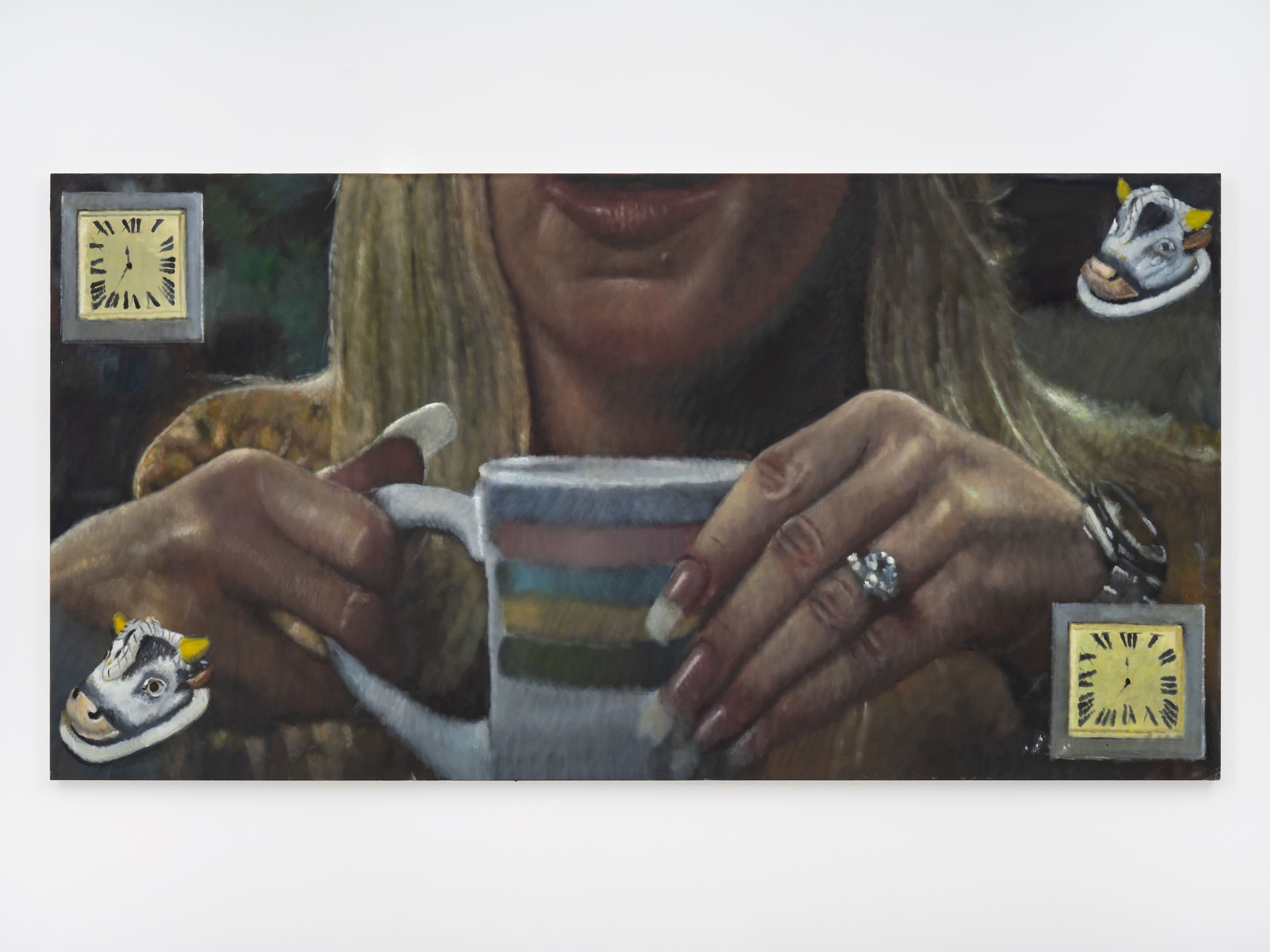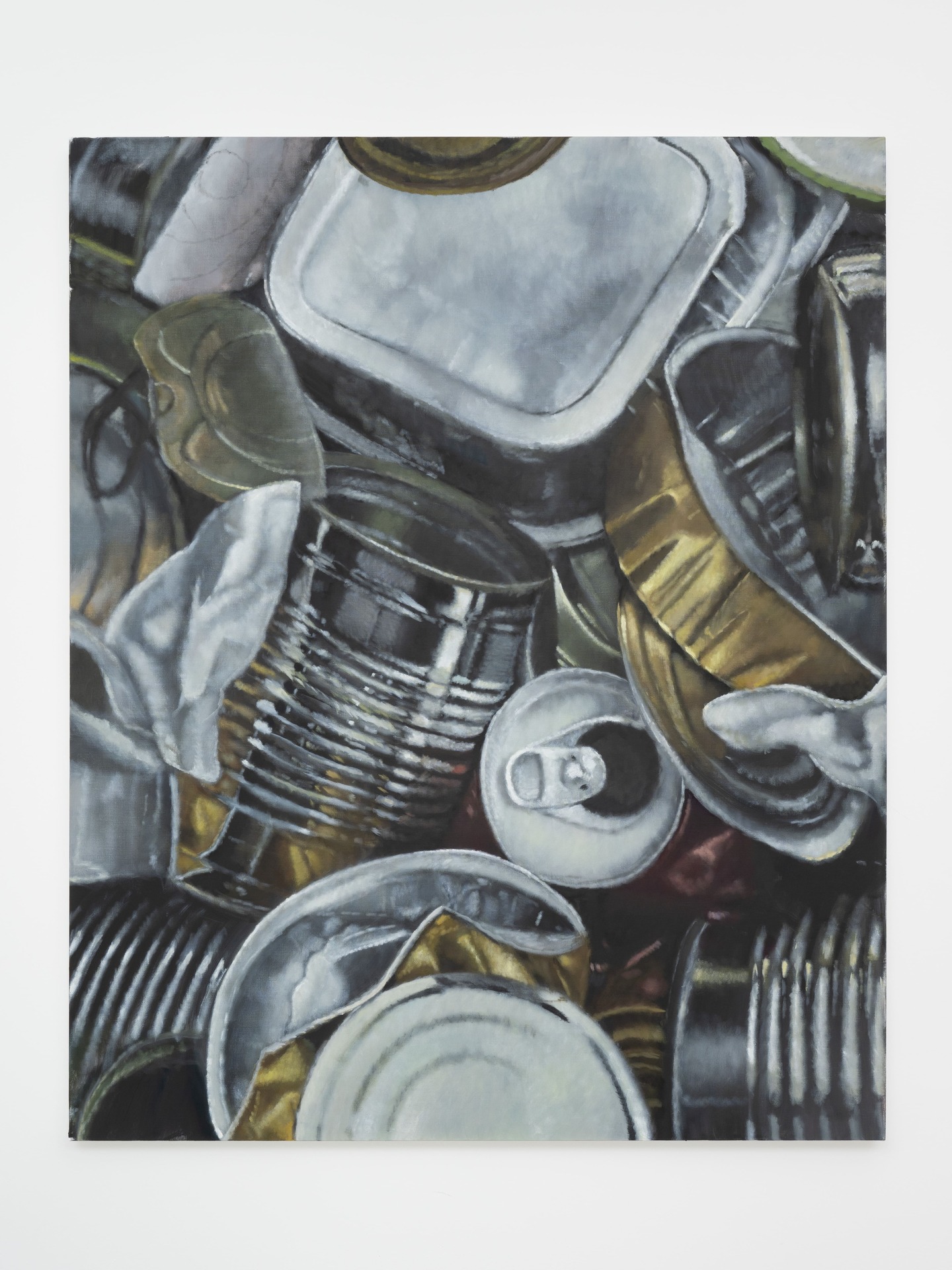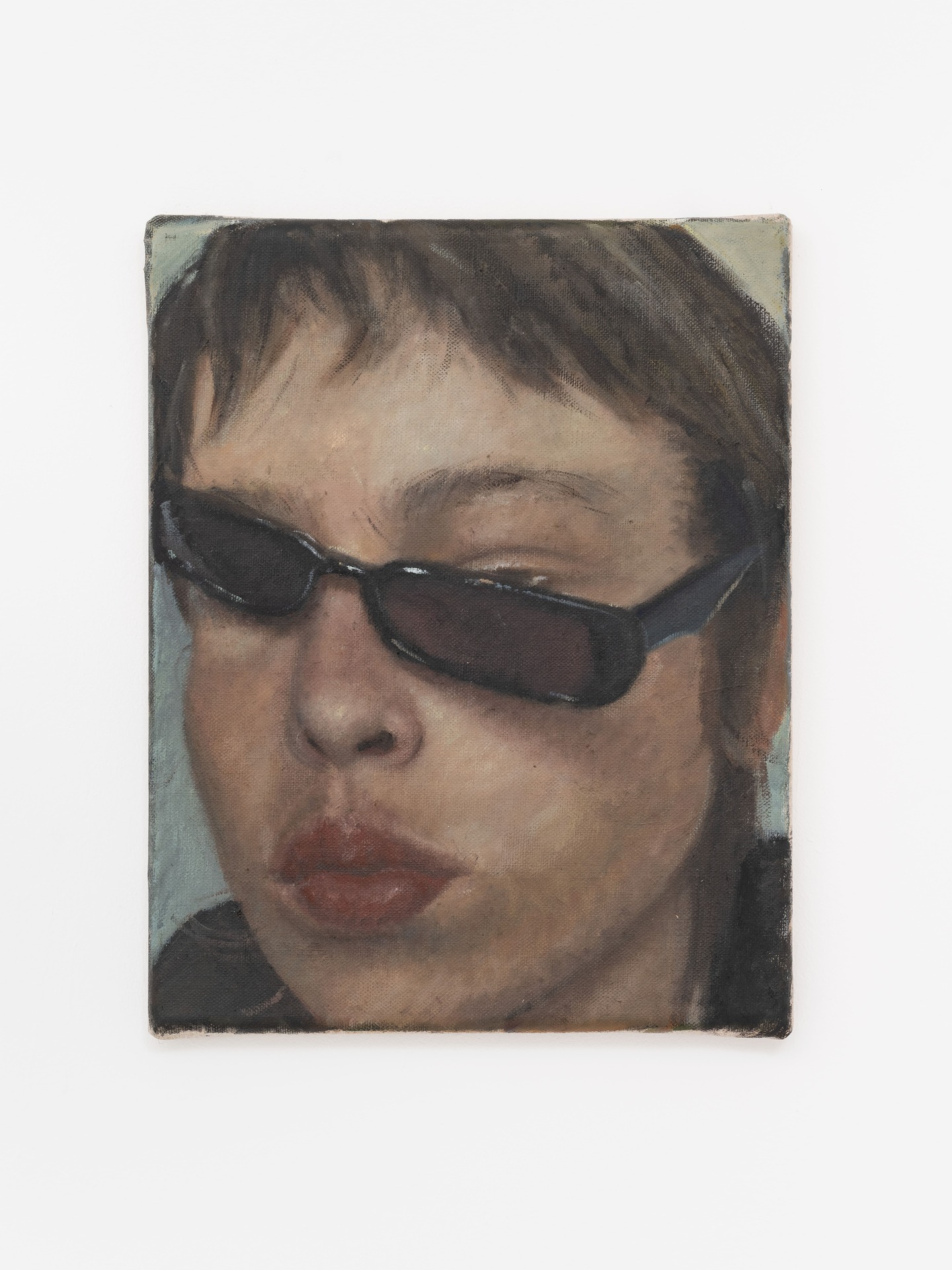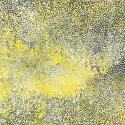To take a trip into the world of Issy Wood is to be embraced by paradox. A richness of imagery that can at time shock with its blandness and at others seduce with a sense of wonder; a perfectly accomplished surface that reveals, with familiarity, a labyrinth of unexpected depth and sensuality; a confrontation with the glitz of hyper-reality that’s constantly playing with the illusory nature of all images; collections of apparent trivia bathed in an aura of mystery.
She has a large show right now at the splendid Lafayette Anticipations, a very well-run showcase for cutting-edge contemporary art, tucked away in the Marais and supported by a foundation financed by the Paris’s celebrated Galeries Lafayette. Wood displays unnerving technical mastery: she does deception as if she were born to it, and works with illusion to reflect on her own emotional and psychological journey, her life as a woman, the materialism which has nurtured her since childhood. It would be easy to dismiss her sensual close-ups of luxury sports car interiors, and details of women’s power-clothing as mere comments on erotic display and armouring, but there's more to this than a conceptual tease. Objects of desire, and tools to elicit arousal. In the context of her other paintings of everyday objects – not least a great deal of porcelain, the dinner sets that suggest her family’s refuge in formal dining, and paintings that reference popular culture – such as a cut-off image of Carmela from The Sopranos (pictured below) – the powerful yet oblique autobiographical core of her work gradually becomes apparent.  There are some disturbing yet strangely engaging paintings that display dental work in intimate detail; a mouth full of teeth that might belong to a blood-sucking vampire; the tools of the dentist’s trade gleaming under the invisible surgery lights. Weird? Yes but no more than other allusions to the fragility of porcelain, and cute images of animals dead and alive. As we ascend the three floors of the gallery – a brilliant museum space designed by Rem Koolhaas – the mixture of hard-hard edged irony and stirring vulnerability gets under one’s skin. Issy Wood has a fierce intellect, and plenty of anger – with doctor parents who programmed her for over-achievement. She references her eating disorders as a child, in and out of hospitals, perhaps as a way of sabotaging a bulimic submission to performance as well as to the consumption of food.
There are some disturbing yet strangely engaging paintings that display dental work in intimate detail; a mouth full of teeth that might belong to a blood-sucking vampire; the tools of the dentist’s trade gleaming under the invisible surgery lights. Weird? Yes but no more than other allusions to the fragility of porcelain, and cute images of animals dead and alive. As we ascend the three floors of the gallery – a brilliant museum space designed by Rem Koolhaas – the mixture of hard-hard edged irony and stirring vulnerability gets under one’s skin. Issy Wood has a fierce intellect, and plenty of anger – with doctor parents who programmed her for over-achievement. She references her eating disorders as a child, in and out of hospitals, perhaps as a way of sabotaging a bulimic submission to performance as well as to the consumption of food.
The show is all about saying “No!” – refusing convention and the demands of the patriarchy. This is negation that frees, affording a freedom that allows the young artist to follow her nose, rather than the lure of fashion or a well-defined script. Issy Wood is driven by a need for rawness, the refusal of the armour with which most of us defend our most wounded selves, as well as a defiance of the rules – imposed in large part by older men: Larry Gagosian who wouldn’t believe her turning him down as her dealer, or seasoned music producer Mark Ronson who believed he was the best person to transform her songs into gold. The songs, collected in an album resplendent with a brooding mix of melancholy and resignation, feature vocals treated in a manner that creates distance as well as uneasy intimacy. The character of Wood’s music mirrors the aesthetic of her paintings: desire and repulsion, vulnerability and armour, and an almost confrontational self-revelation make for a form of uneasiness that is irresistible. There is style here, plenty of it, but so much more.
 Her remarkable painter’s skill – mostly oil on linen – is at the service of the hyper-realistic representation of everyday objects – the hardness of the material world – porcelain and silverware, the evocation of animals domesticated in near-kitsch figurines and tchotchkes as Wood calls them. These objects and possessions – the fragments of fashion items as well – are gestures designed to arrest time, enabling us to hold onto something impervious to decay and death, the harsh realities that nourish melancholy beneath the more bearable escape into the everyday. Time as well, the realm of Saturn, the god of dark times, is ever-present: Issy Wood is mad about clocks – or is it the passing of time that makes her a little mad herself?
Her remarkable painter’s skill – mostly oil on linen – is at the service of the hyper-realistic representation of everyday objects – the hardness of the material world – porcelain and silverware, the evocation of animals domesticated in near-kitsch figurines and tchotchkes as Wood calls them. These objects and possessions – the fragments of fashion items as well – are gestures designed to arrest time, enabling us to hold onto something impervious to decay and death, the harsh realities that nourish melancholy beneath the more bearable escape into the everyday. Time as well, the realm of Saturn, the god of dark times, is ever-present: Issy Wood is mad about clocks – or is it the passing of time that makes her a little mad herself?
The Paris show takes one on an initially bewildering trip through three floors, up to the top gallery, exposed to the light of day. Here lies the key – in many ways – to the whole work: a series of smaller self-portraits, individually breath-taking and collectively packing the most powerful emotional punch. She is in turn weeping, hiding behind dark glasses that have slipped to reveal part of a wounded eye, and perhaps the most stirring, another close-up, in which a dog is nuzzling herself close to Wood’s face, as the artist glances at us knowingly in the manner of some of those self-referential paintings from the 17th century Low Countries.
 The image, perhaps the most personal amidst work characterised by brilliant obliqueness that is combined with almost confessional self-exhibition and visual journaling, resonates, in a poetic rather than literal way, with “Drool”, the last song on her aptly-named first album, My Body Your Choice. The price of physical intimacy, the terrifying yet seductive nature of sexuality, and the lure of dependency on a lover, are evoked in a song that betrays a maturity way beyond Wood’s 29 years. “I'm a fool /For you make me drool/I'm like an animal/You make me drool” she sings. Her art and the music, are – as with the very best practitioners – a necessity, a survival strategy to keep her from drowning. This feeling of urgency, made flesh with such undoubted gifts, is what makes Issy Wood an artist who very much deserves to be watched.
The image, perhaps the most personal amidst work characterised by brilliant obliqueness that is combined with almost confessional self-exhibition and visual journaling, resonates, in a poetic rather than literal way, with “Drool”, the last song on her aptly-named first album, My Body Your Choice. The price of physical intimacy, the terrifying yet seductive nature of sexuality, and the lure of dependency on a lover, are evoked in a song that betrays a maturity way beyond Wood’s 29 years. “I'm a fool /For you make me drool/I'm like an animal/You make me drool” she sings. Her art and the music, are – as with the very best practitioners – a necessity, a survival strategy to keep her from drowning. This feeling of urgency, made flesh with such undoubted gifts, is what makes Issy Wood an artist who very much deserves to be watched.









![SEX MONEY RACE RELIGION [2016] by Gilbert and George. Installation shot of Gilbert & George 21ST CENTURY PICTURES Hayward Gallery](/sites/default/files/styles/thumbnail_125_x_125_/public/mastimages/Gilbert%20%26%20George_%2021ST%20CENTURY%20PICTURES.%20SEX%20MONEY%20RACE%20RELIGION%20%5B2016%5D.%20Photo_%20Mark%20Blower.%20Courtesy%20of%20the%20Gilbert%20%26%20George%20and%20the%20Hayward%20Gallery._0.jpg?itok=3oW-Y84i)





Add comment